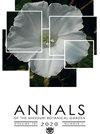Implementing Access and Benefit Sharing for Seed Banking
IF 1.1
3区 生物学
Q3 PLANT SCIENCES
引用次数: 0
Abstract
Abstract A global study has shown that Australian crop wild relatives (CWRs) are a priority for ex situ conservation and future use. The majority of target species occur across various land tenures in northern Australia, including Indigenous Protected Areas. Work undertaken on Indigenous lands needs careful consideration, and until recently the planning of wild crop collections has taken a Western scientific approach. Awareness of potential cultural issues associated with access and use of traditional knowledge is increasing, and Indigenous community expectations associated with use of their knowledge can vary between individual traditional owners and within communities. The Council of Heads of Australian Botanic Gardens Incorporated, through its Australian Seed Bank Partnership, is collaborating with the University of New England to define clear processes and develop protocols for traditional knowledge stewardship, helping to minimize the risk of compromising the cultural integrity of data, while being practical for implementation by the nation's leading botanic gardens. This paper examines how scientific paradigms within botanic garden policy are being transformed in the context of working with Indigenous traditional owners. It will highlight how the Partnership is creating possibilities “on country” (i.e., on traditional lands) within its projects and consider benefits that Indigenous communities may receive from working with this alliance.实现种子银行的准入和利益共享
摘要一项全球研究表明,澳大利亚作物野生亲缘关系(CWR)是迁地保护和未来使用的优先事项。大多数目标物种分布在澳大利亚北部的不同土地保有期,包括土著保护区。在土著土地上进行的工作需要仔细考虑,直到最近,野生作物采集的规划一直采用西方的科学方法。对与获取和使用传统知识相关的潜在文化问题的认识正在提高,土著社区对使用其知识的期望可能因个人传统所有者和社区内部而异。澳大利亚植物园负责人理事会通过其澳大利亚种子库合作伙伴关系,正在与新英格兰大学合作,为传统知识管理制定明确的流程和协议,帮助最大限度地降低损害数据文化完整性的风险,同时可供全国领先的植物园实施。本文探讨了在与土著传统所有者合作的背景下,植物园政策中的科学范式是如何转变的。它将强调伙伴关系如何在其项目中创造“在国家”(即在传统土地上)的可能性,并考虑土著社区与该联盟合作可能带来的好处。
本文章由计算机程序翻译,如有差异,请以英文原文为准。
求助全文
约1分钟内获得全文
求助全文
来源期刊
CiteScore
3.60
自引率
0.00%
发文量
15
期刊介绍:
The Annals of the Missouri Botanical Garden is a quarterly international journal primarily devoted to systematic botany and evolutionary biology. We encourage submissions of original papers dealing with significant advances in the taxonomy, phylogeny, biogeography, paleobiology, and evolution of plants, and in conservation genetics and biology, restoration ecology, and ethnobiology, using morphological and/or molecular characters, field observations, and/or database information. We also welcome reviews and papers on conceptual issues and new methodologies in systematics. Important floristic works will also be considered. Symposium proceedings discussing a broader range of topical biological subjects are also published, typically once a year. All manuscripts are peer-reviewed by qualified and independent reviewers.

 求助内容:
求助内容: 应助结果提醒方式:
应助结果提醒方式:


